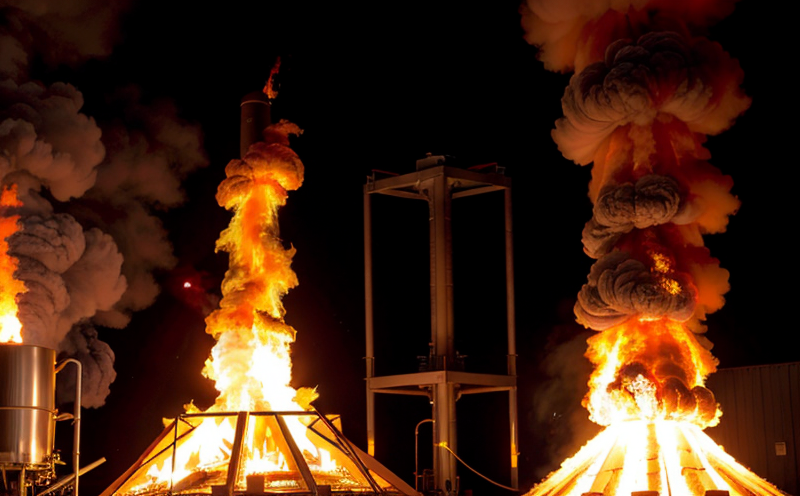EN 60695 Flammability Testing of Electrical Equipment
The European standard EN 60695-11 specifies methods to determine the flammability characteristics of electrically operated equipment. This testing is critical for ensuring electrical devices do not ignite or cause fires under specified conditions, which can lead to severe safety hazards and property damage.
Flammability tests are essential in various sectors including consumer electronics, automotive, industrial machinery, and medical devices among others. Ensuring compliance with EN 60695 helps manufacturers meet regulatory requirements and safeguard end-users by preventing potential accidents and injuries associated with flammable materials used in electrical equipment.
The standard provides two main approaches for assessing the flammability of electrical products: horizontal test (EN 60695-11-1) and vertical test (EN 60695-11-2). Both methods involve exposing samples to a flame source until they ignite or extinguish, then measuring various parameters such as burning time, afterglow duration, and the rate at which the sample burns.
For horizontal testing, the specimen is placed horizontally on an inclined support plate and exposed to a controlled flame. The goal here is to simulate conditions where equipment might be in contact with a flame source during normal use or accidental exposure.
In vertical testing, samples are hung vertically from a holder and subjected to similar flaming conditions. This configuration aims at replicating scenarios where items could overhang or drape near an ignition source.
Accurate sample preparation is crucial for reliable test results. Samples must be free of contaminants that could affect the outcome. They should also represent typical product dimensions unless otherwise specified by the standard. Preheating, if required, ensures consistent testing across all samples within a batch.
The testing process involves igniting the specimen from one end and monitoring its behavior until it ceases to burn. Key parameters measured include burning time (the duration from ignition to extinction), afterglow time (time taken for residual heat to dissipate completely), and the mass loss during combustion. These metrics provide valuable insights into how well the material resists ignition.
Understanding these metrics is vital because they help determine whether a given component or entire device complies with specified limits set forth in EN 60695-11. Compliance helps manufacturers ensure their products meet stringent safety standards, thereby protecting consumers from potential risks.
Proper interpretation of test results also aids in identifying areas where improvements can be made. For instance, if a particular component fails to pass the flammability test, further investigation may reveal weaknesses in design or manufacturing processes that need addressing before proceeding to market release.
In summary, conducting EN 60695-11 tests ensures product safety by verifying whether electrical items can withstand exposure to flames without catching fire easily. This practice not only fulfills regulatory obligations but also enhances consumer confidence in the reliability of electronic goods available on today's markets.
Benefits
- Enhanced Product Safety: Ensures that electrical equipment meets stringent flammability standards, reducing risks associated with fire hazards.
- Regulatory Compliance: Helps manufacturers adhere to international regulations ensuring safe products are marketed globally.
- Increased Consumer Confidence: By passing these rigorous tests, companies signal their commitment to quality and safety, fostering trust among customers.
- Improved Design Insights: Provides detailed information about material behavior under flame exposure aiding continuous improvement efforts within R&D departments.
Eurolab Advantages
Eurolab is committed to delivering high-quality, reliable flammability testing services that meet the highest international standards. Our team of experts employs state-of-the-art facilities equipped with advanced instrumentation capable of accurately measuring critical parameters such as burning time and afterglow duration.
We pride ourselves on providing not just compliance but also actionable insights through thorough analysis of test results. This approach ensures clients gain comprehensive understanding beyond mere pass/fail decisions, enabling informed decision-making processes throughout product development cycles.
Competitive Advantage and Market Impact
Earning certification based on EN 60695-11 tests can significantly enhance a company’s reputation within its industry. It demonstrates robust quality control practices, setting brands apart from competitors who may not adhere strictly to such stringent testing protocols.
Moreover, successful completion of these tests opens doors to international markets where adherence to European standards is mandatory. This certification can be particularly beneficial for exporters looking to penetrate EU jurisdictions or those seeking broader acceptance across different regions worldwide.





